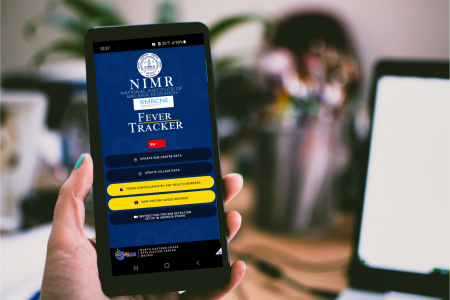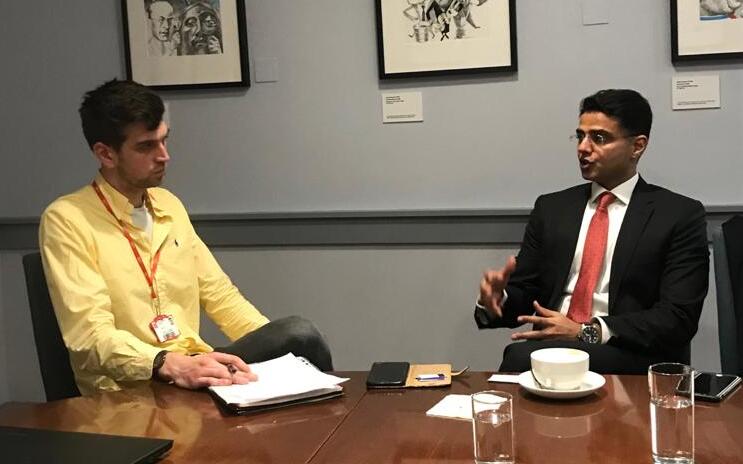Big Data has been in the news for some time now. The COVID-19 pandemic has highlighted its uses in healthcare at the popular level when simple mobile apps have been used to collect large amounts of public data quickly, allowing scientists to advise governments on the best methods for tackling this health emergency. Jyoti Chibber-Goel describes another similar effort in a remote region of India where technology and Big Data are helping to fight the scourge of malaria that took more than half-a-million lives around the world in 2020.
Big Data has been big news in the last two decades. It has particular relevance to the healthcare sector. Big Data can simply be described as vast amounts of data (in exabytes even) on a given topic, e.g., patients’ blood pressure records for a fixed period. The software then analyses this data for patterns that can be identified to improve health outcomes for patients. For example, it may identify characteristics of patients particularly at risk, or lifestyles that have responded well to particular health treatments. This information can then be used to design better treatment plans for patients.
Using Big Data in this way has two crucial aspects: collecting and analysing the data. Using cheap, simple, mobile-phone-based technology, many healthcare providers successfully allow the public to upload health data quickly and repeatedly. The same facilities also make it possible for the health authorities and providers to analyse this data in real-time and take quick action to help people at risk or prevent/control large disease outbreaks. This post describes such a use in a remote part of India to tackle the infectious disease of malaria.
Malaria Prevalence
Malaria is a significant public health burden. Despite a considerable global effort to eradicate malaria, 2020 was estimated to have seen 241 million infections and 0.63 million deaths globally. Infants, children (under five years) and pregnant women are the most vulnerable group affected by malaria. It is an infectious parasitic disease caused by Plasmodium species. Malaria infection occurs when the Plasmodium-infected Anopheles mosquito bites and transfers the parasite to the host. The five parasites (Plasmodium) species responsible for malaria infection in humans are ‘P. falciparum, P. knowlesi, P. malariae, P. ovale, and P. vivax’. Malaria presents various symptoms, ranging from asymptomatic to mild to severe and is categorised as uncomplicated or severe (complicated). However, among the most common symptoms experienced by malaria patients are fever, chills, headaches, and diaphoresis.
Collection and Use of Surveillance Data to Fight Malaria
Surveillance is one of the most critical measures in the fight against malaria. Poor surveillance data makes it challenging to assess malaria eradication progress and directly targeted efforts to hotspots. Surveillance data is recorded in a fragmented way by numerous parties and is scattered across geographic regions, which is a crucial impediment to upgrading a country’s reporting systems. As a result, malaria surveillance in high-burden nations is inadequate. With a shift in malaria-endemic nations’ goals from malaria management to malaria eradication during the last decade, the health information system must improve disease monitoring and transition from paper-based data collection to real-time point surveillance.
A malaria surveillance system comprises the people, methods, equipment, and institutions required to collect data on malaria cases and fatalities. The data is used to design, administer, monitor, and evaluate malaria control programmes. Surveillance is the foundation of operational actions in any context with whatever degree of transmission. Its goal is to decrease malaria’s burden, eliminate illness, and prevent its re-emergence. Malaria monitoring is frequently linked to larger routine health information systems to offer data for general trend analysis, stratification, and resource allocation planning in countries where transmission remains high and government programmes aim to minimise morbidity and death costs. Surveillance goals in malaria-free areas include identifying, investigating, and eliminating sites of ongoing disease transmission, preventing and curing infections, and confirming the removal after eradicating malaria. Thus, the responsibility shifts to preventing the disease from re-emerging.

Source: © Jyoti Chibber-Goel
FeverTracker
In 2016, the National Vector Borne Disease Control Program (NVBDCP), part of the Ministry of Health and Family Welfare (MoHFW), India, announced the National Framework for Malaria Elimination to eliminate malaria by 2030. The NVBDCP is the world’s most extensive malaria surveillance system, but it loses cases identified and treated in the private sector.
To address and enhance malaria surveillance in India, scientists from India utilised mobile health technology to strengthen the ongoing efforts at malaria elimination via developing a mobile health application called “FeverTracker“. FeverTracker app provides an adaptable template integrated within the nation’s health systems to build a healthcare system network. We developed the FeverTracker site, which includes real-time analytics for visualising dynamic geographic information system (GIS) maps with statistics and data updates. The FeverTracker app is functional offline for efficient surveillance in distant areas with little or no access to the mobile network. The software has an offline data entry capability, which saves data on the device and uploads it to the server whenever the network is accessible. It is an integrated mobile health app for malaria case identification, data collecting, and reporting. We tested the portal and the app on a group of health workers and volunteers in 19 tribal villages of the Dhalai district in Tripura, India, for 20 months (period). The app was found to assist health care workers in reporting malaria cases and combine active and passive case identification fever surveillance.
The advantages of using digital management over traditional paper-based systems include instant digitisation of epidemiological data.
The app collects data on malaria cases and their location while also offering local language help to health personnel on the field. The web application platform’s connection also provides real-time data sharing to district and state surveillance teams. As a result, health officials will now pinpoint malaria transmission and foci hotspots. Finally, using an app and a web platform will strengthen surveillance coverage, case data integration, data analysis, and epidemiology visualisation, all of which will benefit malaria control programmes.
Banner Image: Photo by Markus Spiske on Unsplash.
The views expressed here are those of the author and not of the ‘South Asia @ LSE’ blog, the LSE South Asia Centre, or the London School of Economics and Political Science.







